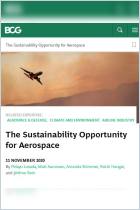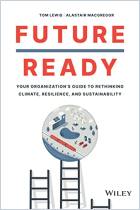The pandemic was no picnic for the aviation industry, but even before COVID-19 travel restrictions came on the scene, there was plenty of trouble to consider. Customers, employees, shareholders, and most importantly, policy makers have been clamoring for lower carbon emissions for decades. When an industry’s product is carbon-heavy transportation, how do you reduce its carbon footprint without removing the product entirely? Experts from the Boston Consulting Group explore climate-friendly aviation options in this special report, but don’t get too excited – none of them are close to widespread adoption.
With a goal of achieving net-zero carbon emissions by 2050, the aviation industry is facing an uphill battle.
Many airlines made much-needed changes during the COVID-19 pandemic. They retired old aircraft, retrofitted existing aircraft, rationalized routes, and enhanced operations for improved efficiency. These changes will help in the next quest that looms on the horizon: net-zero emissions by the year 2050.
Governments, customers, employees and activist shareholders have made their concerns clear – if the aviation industry doesn’t address climate concerns preemptively, regulation will likely force its hand. The EU has already made policy moves in that direction. Aviation industry players will need to work together to influence policy and choose a unified direction for carbon reduction.
Improved efficiencies have already reduced fuel...
Ryah Whalen, Thomas Eisenhart, Adam Gordon, Michael Deimler, Pelayo Losada and Clint Follette are professionals with the Boston Consulting Group.

















Comment on this summary